The role of medical education in addressing rural physician shortages
Know many doctors who can operate a forklift? There’s a least one: Kara Fess, M.D., has practiced in a rural community for 21 years. In 2020, she took her commitment to rural medicine one step further, becoming the director for the Rural Medical Education (RMED) Program — training the next generation of physicians dedicated to serving small communities in Illinois and beyond.
But Fess didn’t always want to be a small-town doctor — she wanted to be a big city lawyer. A love of science and a summer job at a farm supply warehouse in her hometown of Macomb, Ill., pop. 1,500, led her to medicine instead.
After starting college at Loyola University in Chicago, Fess quickly realized a metropolitan lifestyle wasn’t for her. “I like seeing familiar faces and getting to know people. I really missed that a lot being in Chicago,” she says.
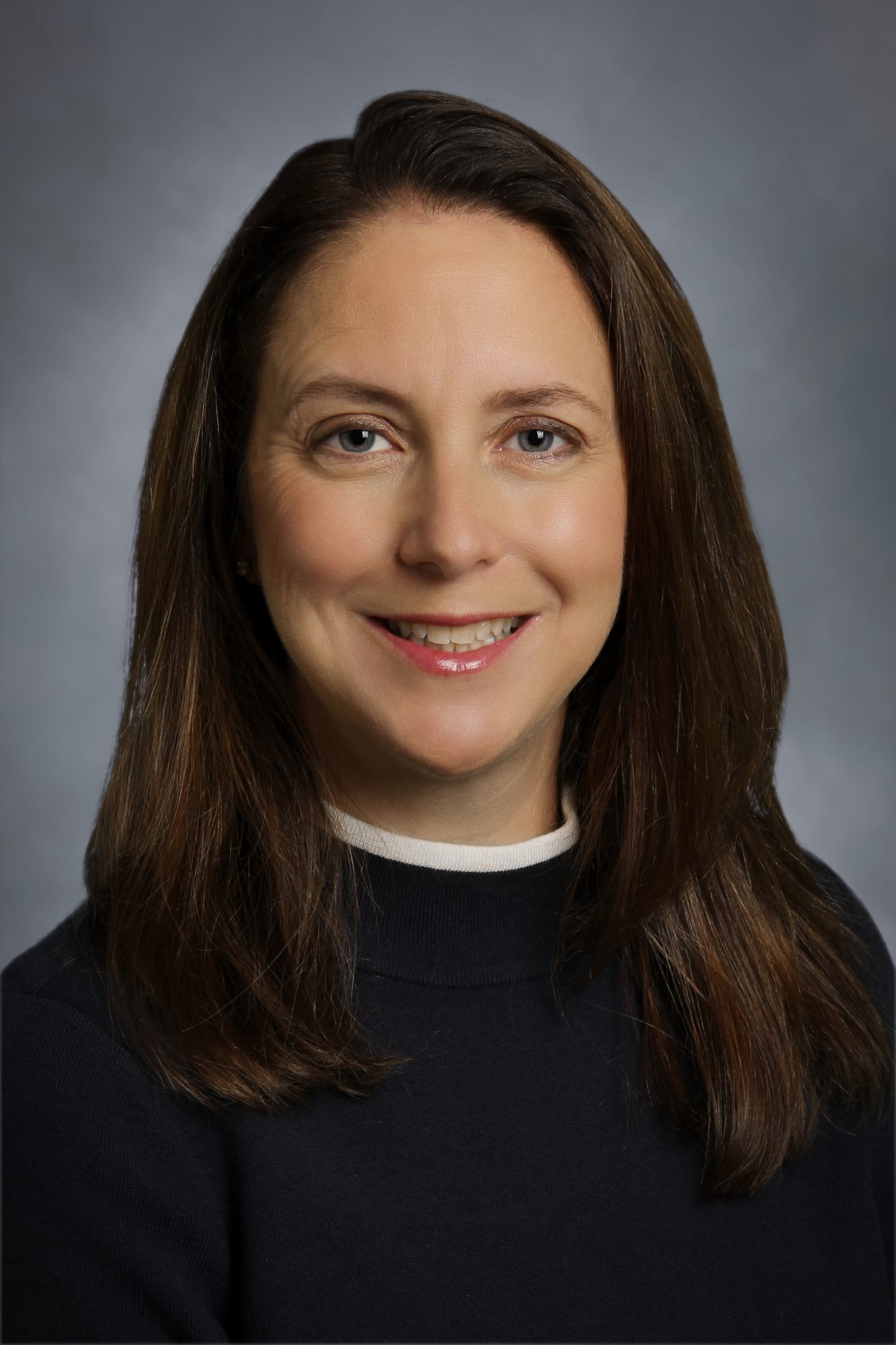 Kara FessDuring her shifts loading and unloading trucks with a forklift, pricing items, and stocking shelves, she heard coworkers and customers talk about their health issues and their physicians. She considered her career options and realized she could make a significant difference in a small town like hers as their doctor. As a family physician, she could form long-term relationships caring for friends and neighbors in need. So she decided to go to medical school, but not just any medical school — she chose one that specialized in training aspiring rural doctors.
Kara FessDuring her shifts loading and unloading trucks with a forklift, pricing items, and stocking shelves, she heard coworkers and customers talk about their health issues and their physicians. She considered her career options and realized she could make a significant difference in a small town like hers as their doctor. As a family physician, she could form long-term relationships caring for friends and neighbors in need. So she decided to go to medical school, but not just any medical school — she chose one that specialized in training aspiring rural doctors.
Fess matriculated into the University of Illinois College of Medicine Rockford RMED Program, which she now directs, in 1995 as a member of its third class. The program uses a grow-your-own model, recruiting students from rural areas to medical school. This homegrown approach is based on the idea that rural health care providers are more likely to serve communities similar to where they grew up or received training.
That idea isn’t just conjecture – scientific research supports it. A 2020 meta-analysis led by Jessica Ogden and her colleagues from General Practice Training Queensland in Australia combined data from 24 studies from different countries to analyze factors that predict eventual rural practice. Their results showed that physicians from rural backgrounds were more than twice as likely to practice in a small town compared to urban counterparts.
Ogden’s team also found that medical students who trained in rural areas were almost twice as likely to practice in rural areas whether or not they grew up in a small town. Finding and training students committed to becoming rural doctors is becoming critically important as rural health disparities continue to increase.
"I wanted to make sure I was somewhere that I would see really complicated medical problems." - Kara Fess |
A report from RTI International showed that the disparity in mortality rates between rural and urban residents increased by more than 12 percent between 1999 and 2019. On average, rural folks are dying sooner and at higher rates than city dwellers, and these trends are amplified in communities where the majority of residents are Black or American Indian/Alaska Native. More than 99 million Americans live in an area without enough primary care medical providers, and 65 percent of those areas are rural. A 2017 U.S. Government Accountability Office report on physician workforce shows that only 10 percent of doctors choose to practice in a rural setting.
Nationally, medical school programs vary widely on the number of slots, if any, that are slated just for rural students. According to Hana Hinkle, Ph.D., director for the National Center for Rural Health Professions where the RMED Program has been housed since its creation in 2003, there are currently 71 rural-focused medical school programs across the United States. Some programs, like RMED, hold a specific number of slots for students from rural areas to be admitted to medical school each year.
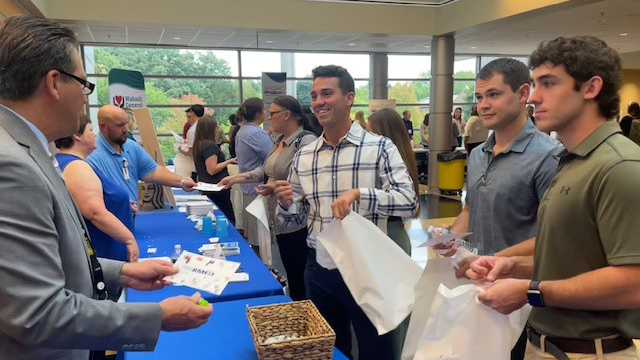 |
These specialized programs also differ in the types and lengths of immersive rural training they offer, which may impact whether students feel prepared to practice rural medicine. Some programs, like the University of Pikeville College of Osteopathic Medicine in Kentucky, provide opportunities for students to complete clerkships at clinics and hospitals in rural and underserved areas during the last two years of medical school. Other programs, like the West Virginia University School of Medicine Rural Track Program and the Rural Medical Scholars Program at the SUNY Upstate Medical University, provide rural-focused lectures and immersions starting the first year of medical training.
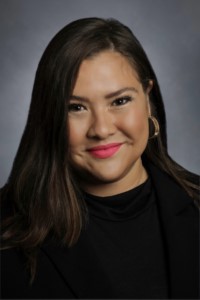 Hana HinkleThe RMED Program provides rural-focused seminars, clinical case studies, shadowing, simulations, and field trips during all four years of medical school, as well as rural clinical placements during third-year clerkships. Students spend four months at the same rural hospital during their last year of undergraduate medical training, which Fess describes as “the meat and potatoes” of her medical school clinical training that gave her an appreciation of what practicing rural medicine would be like.
Hana HinkleThe RMED Program provides rural-focused seminars, clinical case studies, shadowing, simulations, and field trips during all four years of medical school, as well as rural clinical placements during third-year clerkships. Students spend four months at the same rural hospital during their last year of undergraduate medical training, which Fess describes as “the meat and potatoes” of her medical school clinical training that gave her an appreciation of what practicing rural medicine would be like.
Ogden’s study showed that rural residency training was an even stronger predictor of whether doctors choose rural practice. The authors analyzed data from eight studies and found that residents training in rural areas were more than 4.5 times more likely to choose rural practice, including some urbanites choosing to serve as a small-town doctor.
A 2023 study led by Davis Patterson, Ph.D., director for the Center for Health Workforce Studies, also showed that urban physicians who completed a rural residency were more likely to choose rural practice than physicians from rural backgrounds who trained in urban areas. This isn’t always the case. Fess chose to complete residency in the seventh-largest city in the country even though she never wavered from her plan to be small-town doc after medical school.
"We can actually recruit urban people that have the right motivation, the right intention, to become rural practitioners and help provide physicians for rural populations." - Davis Patterson |
“I wanted to make sure I was somewhere that I would see really complicated medical problems,” Fess explains. She also aimed to understand what her patients might experience if she had to refer them to a large hospital that specializes in complex cases like the University of Texas Health Science Center at San Antonio, where she trained.
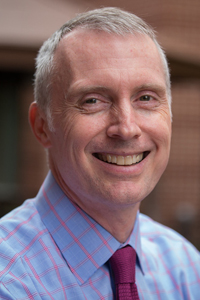 Davis PattersonThe ability to lure city folk to greener pastures is another way to address rural physician shortages. “We can actually recruit urban people that have the right motivation, the right intention, to become rural practitioners and help provide physicians for rural populations,” Patterson says. What does the right motivation look like? Service orientation is part of the answer.
Davis PattersonThe ability to lure city folk to greener pastures is another way to address rural physician shortages. “We can actually recruit urban people that have the right motivation, the right intention, to become rural practitioners and help provide physicians for rural populations,” Patterson says. What does the right motivation look like? Service orientation is part of the answer.
A 2015 study from the West Virginia University Institute for Community and Rural Health found that medical students who scored high on measures of service orientation were more likely to practice in a rural area regardless of where they grew up. Students from urban hometowns showed increases in service orientation after completing a rural clinical rotation, bringing them within 0.03 points of rural students’ prerotation service orientation scores. Training in a rural residency program may increase the desire to serve rural residents, but changes in service orientation before and after residency have not been published in literature.
Research shows that rural place-based clinical training during both undergraduate and graduate medical education are leverage points for increasing the number of rural physicians. However, that might not be early enough in the educational pipeline to make the biggest impact.
 |
“We have to grow people from way back,” Patterson says, “I think you have to look to rural students first and foremost, because many of them don’t have the same opportunities that urban students have to pursue a medical career.”
Fess agrees that it is critical for rural kids to be exposed to health careers early so they realize they can become doctors – and get on track to becoming a trusted health care provider for their small town’s next generation.
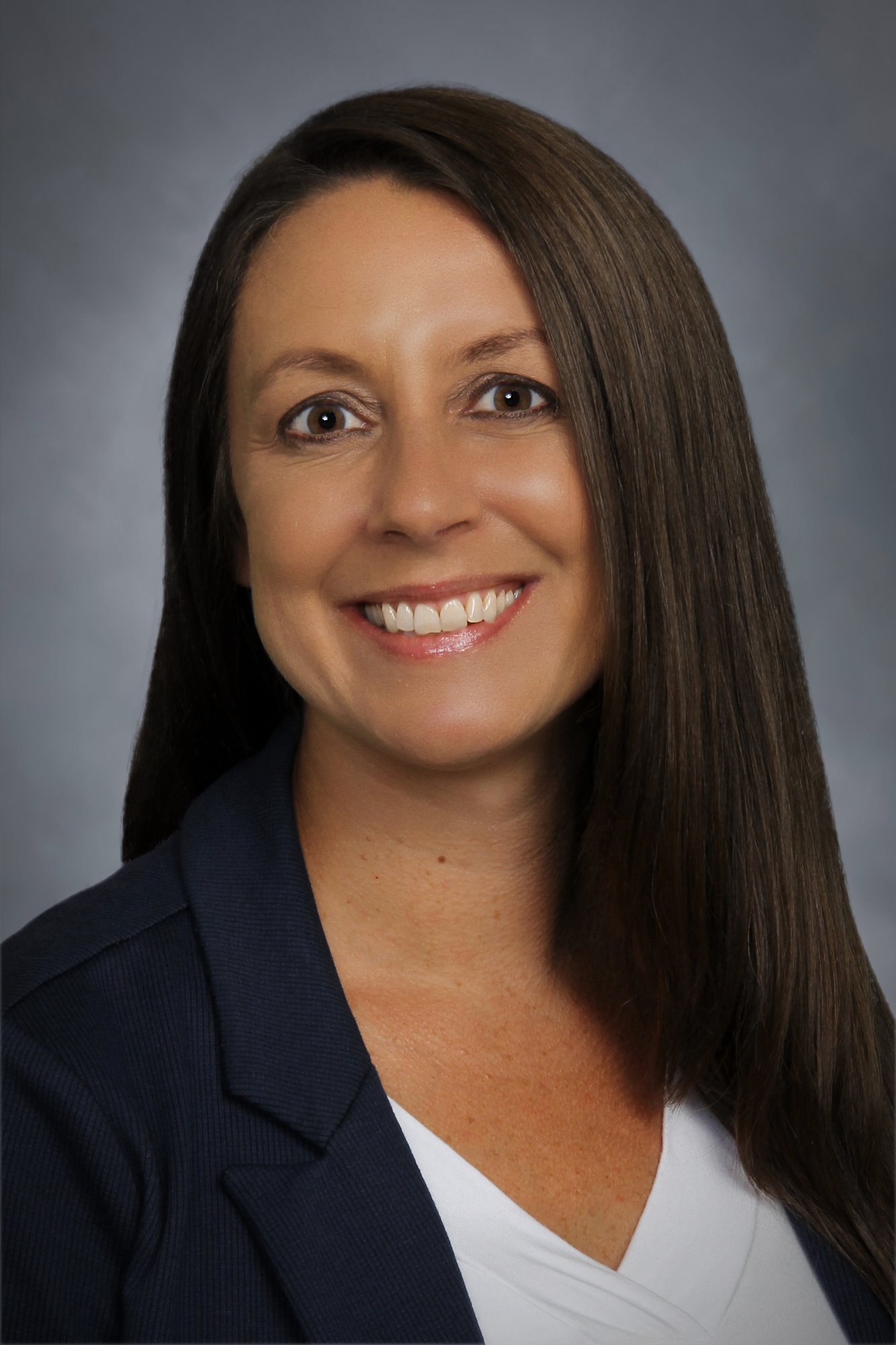 | About the author: A. Brianna Sheppard, Ph.D., previously served as associate director of rural health workforce and center development at the National Center for Rural Health Professions, University of Illinois College of Medicine Rockford. She is currently the director of the WV Area Health Education Centers Program at the West Virginia University Institute for Community and Rural Health. |
Sources:
- In-person interview with Dr. Kara Fess, director, Rural Medical Education Program, University of Illinois College of Medicine – Rockford. 6/20/23. Email: kfess@uic.edu. Phone: 815-395-5786.
- United States Census Bureau, “QuickFacts: Chicago city, Illinois” accessed on August 17, 2023. https://www.census.gov/quickfacts/fact/table/chicagocityillinois/PST045222.
- National Center for Rural Health Professions, “RMED” accessed on June 28, 2023. https://ncrhp.uic.edu/programs/rural-health-professions-academic-programs/rmed/
- Rural Health Information Hub, “Education and Training of the Rural Healthcare Workforce” accessed June 28, 2023. https://www.ruralhealthinfo.org/topics/workforce-education-and-training#grow-your-own
- Ogden, Jessica, Scott Preston, Riitta L. Partanen, Remo Ositini, and Peter Coxeter. “Recruiting and retaining general practitioners in rural practice: systematic review and meta-analysis of rural pipeline effects.” Medical Journal of Australia 213, no. 5 (2020): 228- 236. doi: 10.5694/mja2.50697.
- Jean-Louse, Francoise. “Rural Health Disparities: Changes and Challenges,” RTI Health Advance. 7/7/2022. https://healthcare.rti.org/insights/rural-health-disparities-changes-and-challenges#:~:text=Rural%20health%20disparities%20are%20growing,rural%20and%20urban%20mortality%20rates.
- U.S. Department of Health & Human Services Health Resources Services Administration Bureau of Health Workforce, “Third Quarter Fiscal Year 2023 Designated HPSA Quarterly Summary,” access on September 7, 2023. http://BCD_HPSA_SCR50_Qtr_Smry%20(2).pdf
- U.S. Government Accountability Office, “Physician Workforce: Locations and types of graduate training were largely unchanged, and federal efforts may not be sufficient to meet needs.” 6/26/2017. https://www.gao.gov/products/gao-17-411.
- Interview with Dr. Hana Hinkle, Director Rural Health Professions, University of Illinois College of Medicine Rockford. 6/27/23. Email: hhinkle1@uic.edu. Phone: 815-395-5784.
- Holst, Jens. “Increasing rural recruitment and retention through rural exposure during undergraduate training: an integrative review.” Interional Journal of Environmental Research and Public Health 17, no. 17 (2020): 6423. doi: 10.3390/ijerph17176423.
- University of Pikeville, “Curriculum,” accessed on September 7, 2023. https://www.upike.edu/osteopathic-medicine/kycom-current-students/curriculum/.
- West Virginia University School of Medicine, “Rural Track Program,” accessed on September 7, 2023. https://medicine.wvu.edu/rural-track-program/curriculum/
- Update Medical University, “Rural Medical Scholars Program,” accessed on September 7, 2023. https://www.upstate.edu/fmed/education/rmed/curriculum.php.
- Sloup, Tammie. “Med students get up-close look at potential farm hazards,” FarmWeekNow.com. 10/22/22. https://www.farmweeknow.com/general/med-students-get-up-close-look-at-potential-farm-hazards/article_43e4ab86-4e5e-11ed-b777-9f216cd00279.html
- Rural Training Track Collaborative, “RTTC Participating Programs” accessed on June 30, 2023. https://rttcollaborative.net/rttc-participating-programs/
- Patterson, Davis G. Scott A. Shipman, Samantha W. Pollack, C. Holly A. Andrilla, David Schmitz, David V. Evans, Lars E. Peterson, and Randall Longenecker. “Growing a rural family physician workforce: The contributions of rural background and rural place of residency training.” Health Services Research Online ahead of print (2023). doi: 10.1111/1475-6773.14168.
- University of Washington Center for Health Workforce Studies, “Davis G Patterson, PhD” accessed on June 30, 2023. https://familymedicine.uw.edu/chws/team/davis-patterson/
- Torrey, Trisha. “Differences between Primary, Secondary, Tertiary, and Quaternary Care,” Levels of Care (blog). Verywellhealth.com. 06/30/2023. https://www.verywellhealth.com/primary-secondary-tertiary-and-quaternary-care-2615354
- UT Health San Antonio Department of Family & Community Medicine, “Residency Program” accessed on June 30, 2023. https://lsom.uthscsa.edu/family-medicine/education/residency/
- American Association of Medical Colleges, “How to demonstrate service orientation,” Applying to Medical School. AAMC.ORG. 9/7/2023. https://students-residents.aamc.org/applying-medical-school/how-demonstrate-service-orientation.
- Shannon, Ken and Jodie Jackson. “Validity of Medical Student Questionnaire Data in Prediction of Rural Practice and Its Association with Service Orientation.” The Journal of Rural Health, 31, no. 4 (2015): 373-381. doi: 10.1111/jrh.12123.
- University of Illinois College of Medicine – Rockford, “Family and Community Medicine Faculty and Staff” accessed on June 30, 2023. https://rockford.medicine.uic.edu/departments/academic-departments/family-and-community-medicine/fcm-faculty-staff/name/kara-fess/#:~:text=The%20University%20of%20Illinois%20College,of%20Family%20and%20Community%20Medicine.
